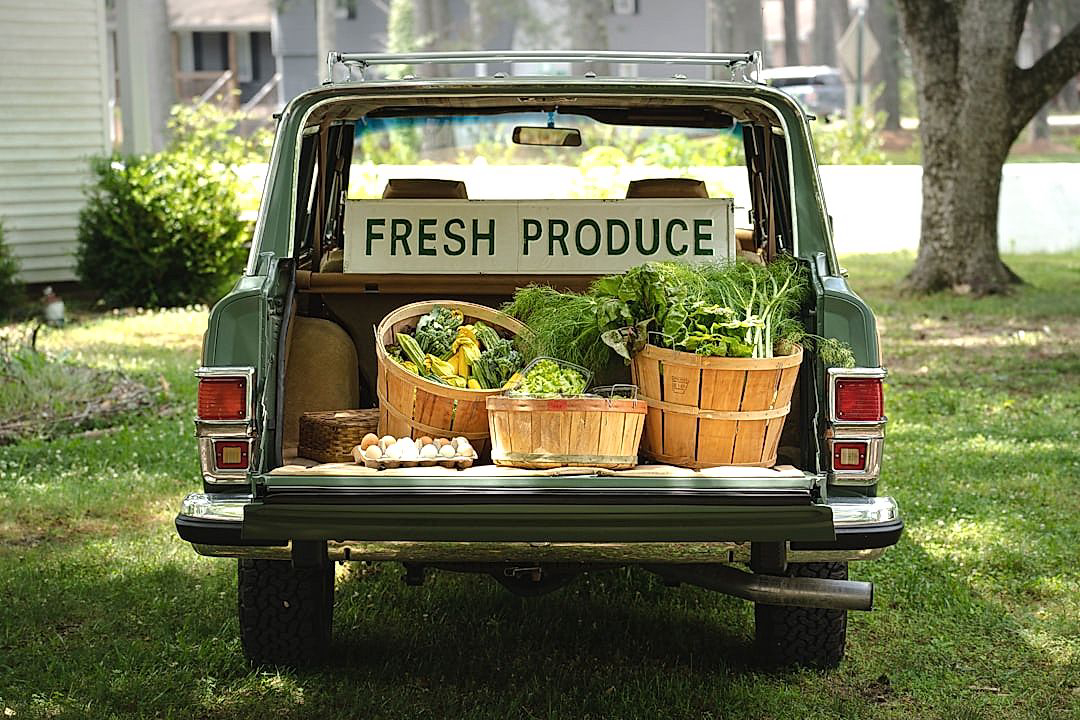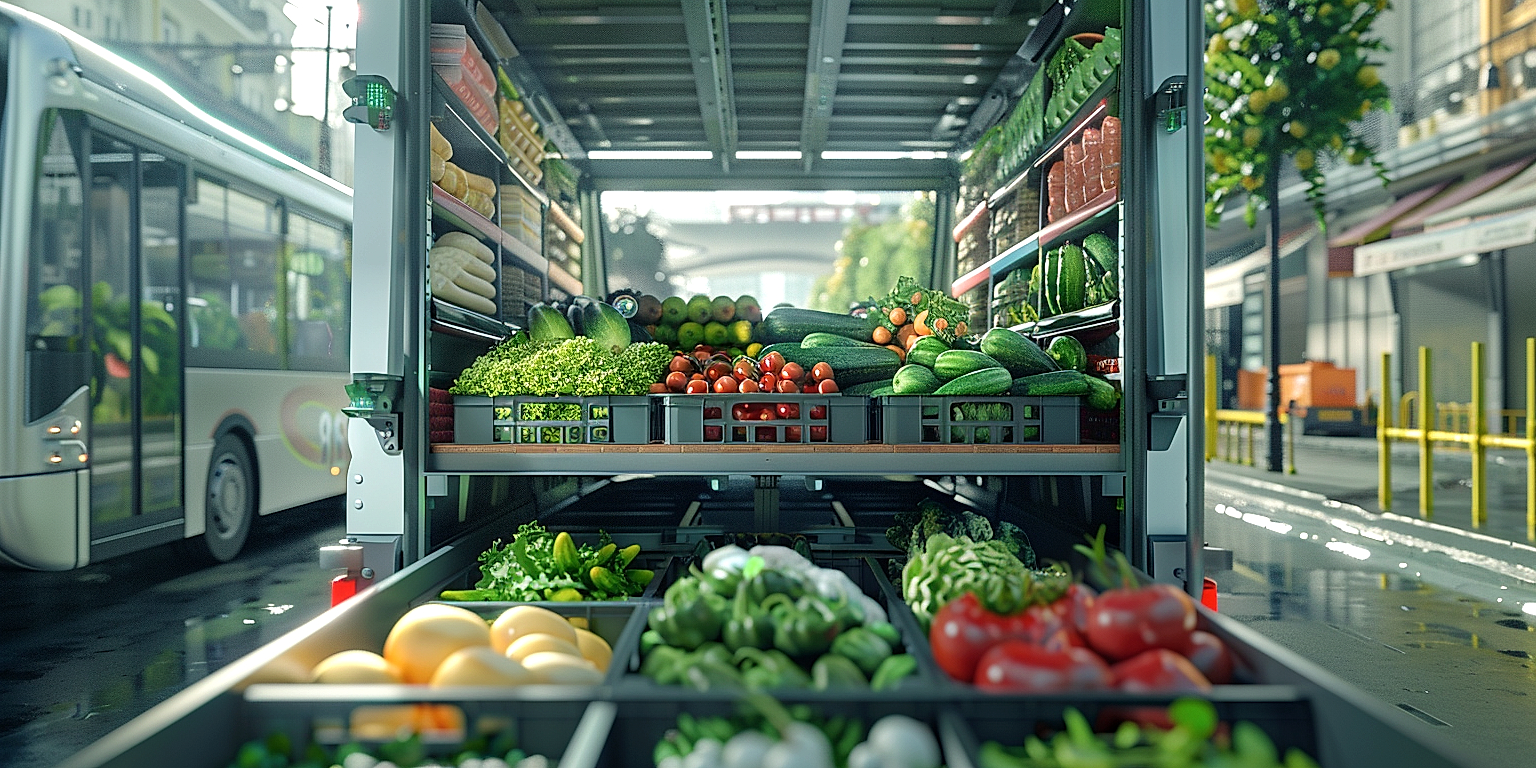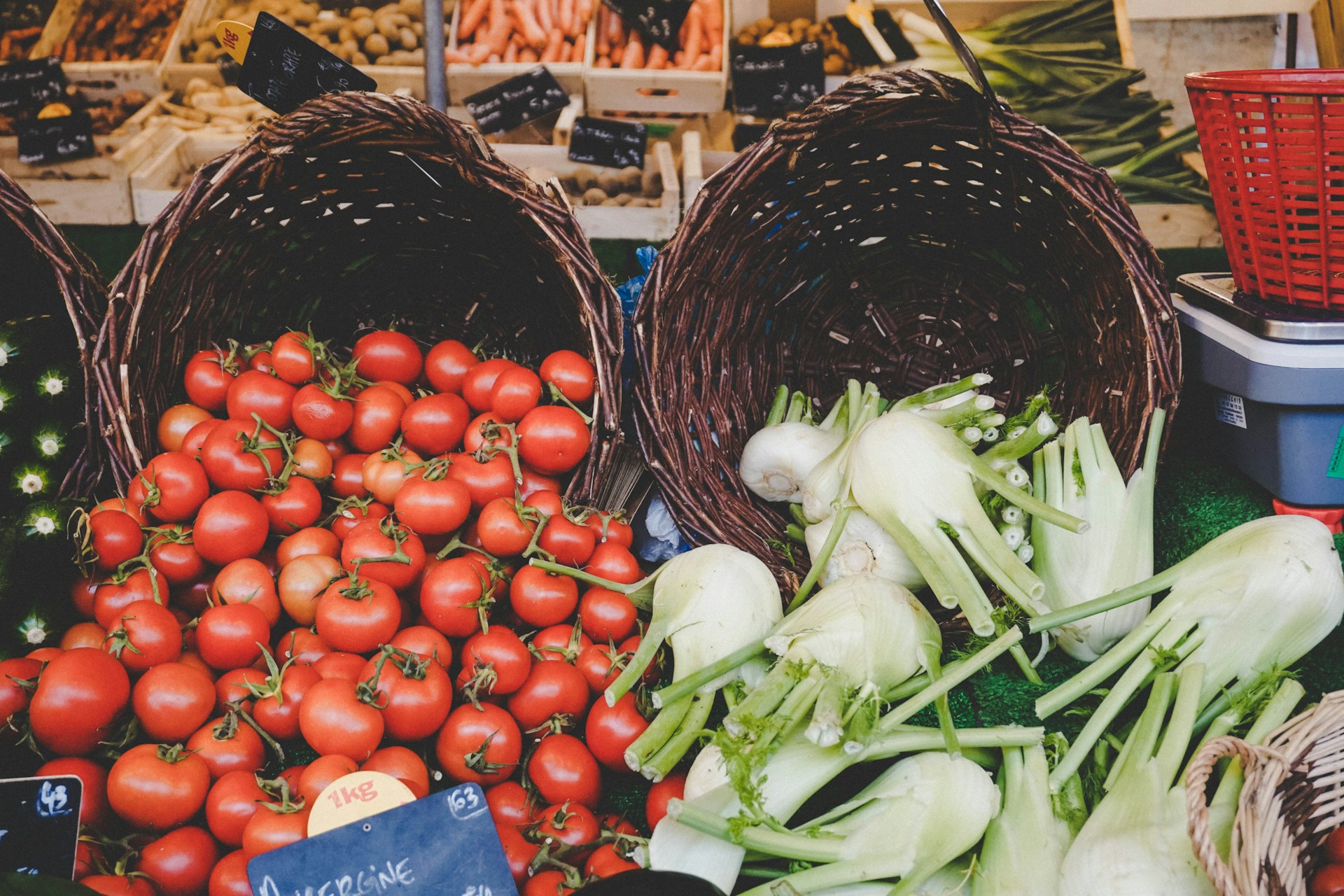In the field of produce distribution, the safety of goods during transport is of paramount importance.
Recent advancements have paved the way for significant improvements in this area, underscoring the criticality of adhering to best practices.
These enhancements not only ensure the integrity of the produce but also contribute to consumer safety.
Innovations are continuously being adopted to guarantee that the freshest products reach consumers promptly.
Hence, understanding these developments is crucial for any party involved in the supply chain.
This exploration will delve into the recent safety enhancements in produce transportation and their implications for the industry.
Contents
- Safety Enhancements In Produce Distribution Transport
- 1. Regular Vehicle Maintenance and Checks
- 2. Thorough sanitization of transport containers
- 3. Appropriate Packaging to Prevent Bruising
- 4. Cold Chain Management for Perishable Items
- 5. Usage of GPS for timely delivery
- 6. Training Drivers on Proper Handling Procedures
- 7. Compliance with food safety regulations
- The Bottom Line
Safety Enhancements In Produce Distribution Transport
1. Regular Vehicle Maintenance and Checks
As part of the safety enhancements in produce distribution transport, utmost priority should be given to the regular maintenance and checks of the vehicles used in the distribution process.
These vehicles play a crucial role in ensuring that the produce is transported from the farm to the consumer in its freshest and safest condition.
Therefore, any breakdown, malfunction or inefficiency in the vehicle can lead to significant quality degradation and consequently, monetary losses.
Timely and effective maintenance of these vehicles not only helps in mitigating such risks but also in enhancing their performance and extending their lifespan.
Regular maintenance involves holistic checks of different vehicle parts including engine, brakes, tires and cooling systems which are critical to the vehicle’s operation.
Properly functioning engine ensures that the vehicle travels at the optimal speed thereby reducing the transportation time and ensuring freshness of the produce.
Effective brakes and tires play a significant role in maintaining vehicular safety, thereby reducing the chances of accidents.
A well-functioning cooling system is absolutely critical for the transport of perishable goods as it preserves the quality and safety of the produce.
All these parameters need to be regularly checked by skilled mechanics and any issues should be flagged and repaired at the earliest.
Additionally, regular maintenance checks should also ensure that the vehicles comply with the environmental and safety standards.
Such checks should monitor and minimize the emission levels as well as ensure the safety of the produce and the personnel involved in the transportation.
Furthermore, these regular maintenance checks should be well-documented and the records should be made available for review by concerned authorities.
This kind of operational transparency enhances the credibility of the distribution process.
Equally important is the training and education of drivers and maintenance personnel about the importance of vehicle maintenance.
They should be made aware of the potential consequences of neglecting vehicle maintenance and motivated to actively adhere to the maintenance schedules.
A well-maintained vehicle is not just a necessary compliance step, but a cornerstone of safe and effective produce distribution transport.
2. Thorough sanitization of transport containers
In produce distribution, nothing is more necessary than ensuring the cleanliness of the transport containers used.
Nevertheless, the sanitization of transport containers extends far beyond just washing with soapy water.
There are many techniques and strict guidelines that need to be implemented by companies on a regular basis in order to guarantee complete disinfection.
A systematic approach to sanitization can vastly reduce the transmission risk of harmful diseases and keep fruits and vegetables fresh and healthy.
Every container must be reviewed individually for debris or residue from previous loads before proceeding with the sanitization process.
Firms must also educate their employees about the importance of sanitization and encourage them to implement it as a routine practice.
Using high-standard sanitizing solutions, such as bactericides or virucides can help to eliminate potential harmful pathogens from the container surfaces.
Every step of the sanitization process should be implemented carefully and by trained experts.
Even after the sanitizing process is completed, continuous monitoring of transport containers for any signs of possible contamination or return of pathogens is crucial.
Periodical auditing of the sanitization process is also essential, as it could be an opportunity to enhance the existing process and upgrade the methods if necessary.
The process of sanitizing transport containers might appear simple at first glance, but the complexity of it lies in its systemic application and the thoroughness of implementation.
Some might argue that proper and complete sanitization can be time-consuming and expensive, but it is a necessary cost for businesses wanting to ensure the safety and quality of the produce they distribute.
Thorough sanitization of transport containers is not only a standard industry practice but also a regulatory requirement in most regions.
Fulfilling these sanitization measures reflects the commitment of a company towards safeguarding public health.
It can not only prevent potential disease outbreaks but also builds trust with consumers, strengthening the brand’s reputation in the process.
This is why thorough sanitization of transport containers should never be undermined or bypassed in produce distribution transport systems.
3. Appropriate Packaging to Prevent Bruising
Within the realm of produce distribution transport, one of the key safety enhancements rises from the proper use of packaging.
For this purpose, the materials utilized to package produce must be both sturdy and protective.
An essential role of the protective packaging is to prevent bruising or any other damage that might compromise the integrity of the produce during transit.
Efficient packaging strategies, therefore, play a critical role in ensuring the safe and optimal condition of the produce on arrival.
It is undeniable that bruised produce is more susceptible to spoilage, causing potential losses for distributors and retailers, as well as disappointment for the end consumers.
This is why selecting the right packaging, designed to cushion and protect the produce, is of utmost importance.
Moreover, appropriate packaging not only prevents physical damage but also contributes to maintaining the produce’s freshness and quality by reducing exposure to harsh environmental factors.
The variety of produce being transported dictates the qualities of the packaging used, with some requiring more robust protection than others.
For instance, delicate fruits like berries may require specialized packaging materials to prevent crushing and preserve their appearance.
Conversely, harder fruits like apples may not require as much cushioning, but still necessitate sturdy packaging for optimum transportation conditions.
Additionally, appropriate packaging that properly separates individual pieces of produce can wildly decrease the possibility of cross-contamination.
Every detail considered in the packaging design–shape, size, material–works towards providing the best defense against external forces that could lead to bruising or any other form of damage.
Equally important is educating the personnel handling the produce, from the packing process up to its delivery, about the significance of handling it with care.
In multifaceted processes such as produce transportation, the consistent utilization of appropriate packaging combined with proper handling can make a substantial difference in minimizing produce bruising.
To summarize, the integration of an effective packaging strategy is a pivotal factor in ensuring the enhancement of safety standards within the produce distribution transport industry.
.4. Cold Chain Management for Perishable Items
In produce distribution transport, understanding and implementing effective cold chain management for perishable items is crucial for maintaining product quality and safety.
Cold chain management refers to the process of preserving and transporting items in a temperature-controlled environment, from the time they are harvested until they reach the end consumer.
This system is integral to prevent rapid spoilage, maintain optimum freshness, and guarantee the safety of perishable food items during transit.
A well-functioning cold chain should ensure that perishable goods such as fruits and vegetables are stored and moved within an appropriate temperature range.
Deviations from this optimal temperature range can lead to quicker degradation of the product, loss of nutritional value, and increased risk of foodborne illnesses.
The rate of product deterioration can be vastly reduced, substantially enhancing food safety and quality, by proper knowledge and strict adherence to the recommended temperature range for different produce.
Therefore, a key responsibility of a transport company is to equip its vehicles with suitable refrigeration technology.
Not only are these refrigerated compartments vital to creating the desired temperature for storage, they must also have controls for humidity levels.
Adjusting humidity along with temperature plays a major role in preventing moisture loss, which contributes significantly to product freshness and weight.
On the other hand, excessive humidity can cause rapid mold growth and decay, hence it is crucial to achieve a balance.
High-quality insulation materials and advanced technologies such as real-time temperature tracking are advantageous in maintaining a consistent temperature throughout the journey, ensuring the integrity of the cold chain.
This encourages improved traceability and allows issues to be identified and addressed promptly, preventing widespread contamination.
To guarantee a seamless and efficient cold chain, training and education for staff and drivers are essential.
Drivers should be trained to monitor refrigeration units, recognize potential problems, and know what courses of action to follow in the event of a crisis.
Also, it’s important to disseminate information and knowledge about the importance of cold chain management, and the serious implications if not duly observed.
Overall, optimizing cold chain management is a critical factor in guaranteeing the safety, quality, and longevity of perishable produce during transport.
5. Usage of GPS for timely delivery
In the realm of produce distribution transport, one of the key technological advancements that can enhance safety and reliability is the usage of Global Positioning System (GPS) for timely delivery.
GPS has fundamentally transformed the logistics and transportation industry, by providing real-time visibility and control over the entire distribution network.
When it comes to transporting goods, especially perishable items like produce, timeliness plays a crucial role.
Every minute of delay can be directly linked to food spoilage, leading to financial loses, not to mention the potential health risks associated with consuming such food.
Applying GPS technology to track and manage the distribution process helps to minimize these risks, ensuring that the produce is delivered in its freshest state.
Moreover, GPS can also contribute to enhanced safety on the road.
It can predict the most efficient routes to a certain destination, thus minimizing chances of road accidents due to rushed and stressed drivers trying to make up for lost time.
Furthermore, the incorporation of GPS into a logistics network can deter theft.
If a transport vehicle veers off its intended route, managers can be alerted in real time and take necessary action to ensure the safety of the produce and the driver.
In terms of cost efficiency, GPS provides valuable insights into the optimization of fuel consumption through its tracking functions.
By detecting areas of frequent stopping, speeding, or idle time, necessary actions can be performed to improve driver behavior and efficiency.
Additionally, GPS supports the concept of ‘last-mile’ delivery, which refers to the final step of the delivery process when a product moves from a location to the intended destination.
The ‘last-mile’ often proves to be the most complex and expensive part of the delivery process, but with the help of GPS, companies can minimize delivery times and costs.
In effect, the use of GPS in transport distribution ensures not only the timely delivery of produce but also its quality and safety.
Without this tool, distributors would surely find it difficult to manage and control the various factors impacting the delivery and safety of produce during transit.
In conclusion, GPS serves as the backbone for modern, safe, and efficient produce distribution.
6. Training Drivers on Proper Handling Procedures
Proper handling procedures play a crucial role in the safety enhancements of produce distribution transport.
Understanding these procedures not only ensures that drivers handle the produce in a way to maintain their quality and prevent any potential damage, but also helps them abide by the food safety regulations.
Such training ensures that drivers are well aware of the importance of maintaining optimal conditions for different types of produce, and ways to achieve those conditions during transportation.
One of the key areas of training is on loading and unloading the produce in and out of the transport vehicles.
This includes using the right tactics and tools to avoid any potential bruising to the produce.
Moreover, drivers are also trained on how to manage heavy loads while maintaining the integrity of the produce.
The training also includes lessons on the use of refrigeration equipment in the transport vehicles.
Drivers are taught to monitor and control the temperatures to ensure that the produce remains fresh and safe for the consumers.
Another important part of training focuses on the proper packaging and positioning of the produce in the transport vehicles to prevent any harm during the journey.
Drivers learn how each type of produce should be placed and segregated to avoid cross-contamination and maintain their individual quality.
Part of this training also covers the implementation and maintenance of cold chain management during transportation of perishable items.
Moreover, the training emphasizes sanitization of the transport containers as a way to prevent the spread of disease and maintain food safety standards.
The drivers are trained to perform regular checks and maintenance on the vehicles to avoid any complications during transportation.
Furthermore, the training also involves educating the drivers about the legal implications and penalties associated with non-compliance of food safety regulations.
This ensures that drivers abide by the rules and maintain the highest standards of safety during transportation.
Lastly, they are also trained in using GPS for timely and efficient delivery, which is key to maintain the freshness of produce and preventing any delays that could affect the quality.
7. Compliance with food safety regulations
The importance of adhering to food safety regulations in produce distribution transport cannot be overstated.
These guidelines are established by governments and food safety organizations, with the primary goal to ensure consumers’ health and safety.
It’s crucial for transport companies to stay up-to-date and flexible, as food safety regulations often undergo revisions and updates based on emerging research and developments.
Ignorance or neglect of these regulations could lead to significant penalties and an irreversible damage to the company’s reputation.
Every member of the supply chain, from the farmer to the truck driver and the supermarket employee, each plays a critical role in maintaining the integrity of these safety standards.
It’s worthy of note that food safety regulations do not solely concern the actual food products, but also encompasses the packaging materials, storage conditions and transportation means.
For instance, regulations mandate that trucks used in transporting fresh produce need to be kept at a specific temperature, usually below 40 degrees Fahrenheit.
There are also stipulations on the cleanliness levels of transport containers, where any sign of decay or mold, minimal as it may be, can cause the entire shipment to be rejected.
While this may seem stringent, this is essential to prevent the spread of foodborne illnesses.
Due to the complexity and multiplicity of these regulations, many companies opt to designate a dedicated compliance officer to ensure all measures are correctly implemented.
Having regular audits on processes and procedures is another effective way for companies to ascertain their compliance with food safety regulations.
The results of these audits often guide companies in the necessary adjustments for better adherence and improved processes.
Moreover, ongoing staff training is key, as it keeps employees informed about their responsibility in maintaining and raising food safety standards.
By systematically complying with food safety regulations, produce distribution transport companies not only meet their legal obligations, but also contribute significantly to the overall public health sector.
Ultimately, the continual enforcement and compliance with food safety regulations are what stand between a successful, reputable produce distribution transport business and a foodborne outbreak waiting to happen.
The Bottom Line
Ultimately, assuring the safety and timeliness of delivered goods comes down to a multifaceted approach encompassing diligent vehicle maintenance, thorough sanitization practices, protective packaging methods, meticulous cold chain management, effective usage of GPS, proper training for drivers, and strict adherence to food safety regulations.
By implementing and maintaining these protocols, businesses can guarantee the quality, freshness, and promptness – vital elements that contribute to consumer satisfaction and retention, while simultaneously cementing their reputation as a reliable provider in the logistics domain.
A well-rounded focus on these key factors firmly establishes the foundation for successfully transporting and delivering goods.




